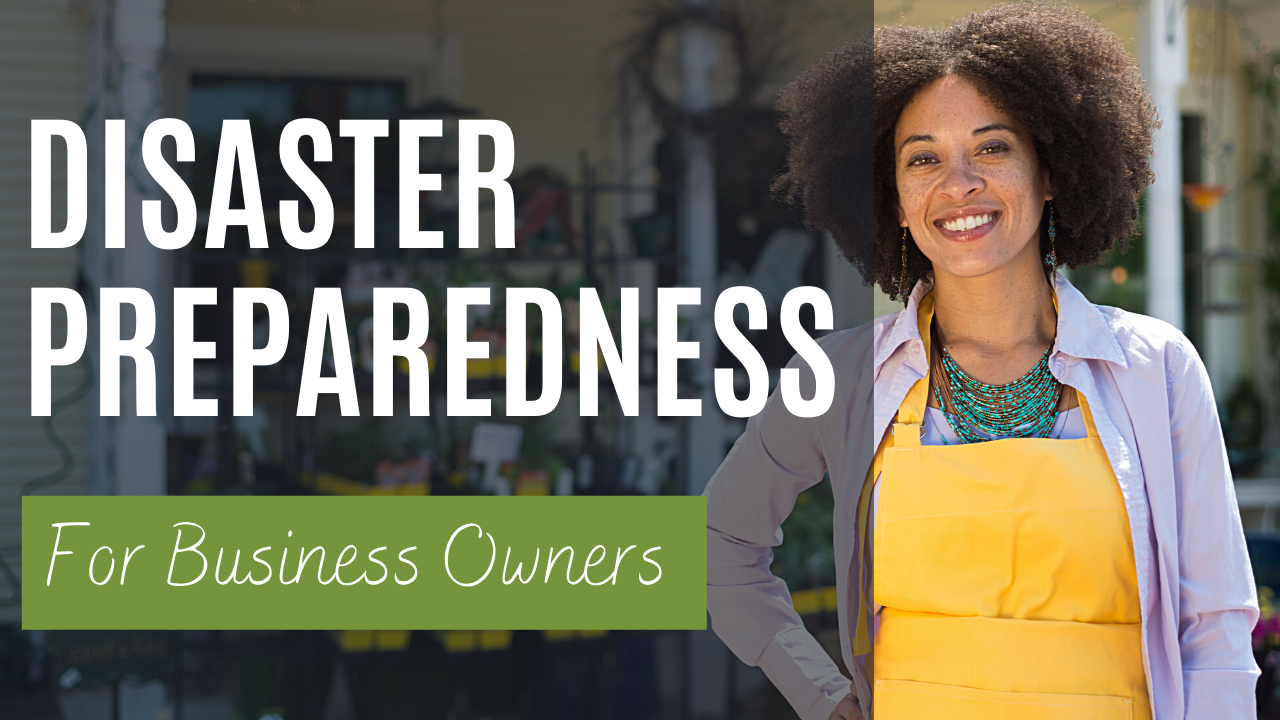Disaster Preparedness for Business Owners
- Blog
- Disaster Preparedness for Business Owners

Disaster Preparedness for Business Owners
- By CWG Advisors
- March 24, 2022
- 0
As a successful business owner, you don't want to think about your operations being interrupted by a natural disaster or other unexpected event. Yet the possibility is a real one.
Natural catastrophes represent just a portion of the crises that your business could face. Although you may not be located in an area prone to hurricanes, blizzards, tornadoes, floods, earthquakes, mudslides, or wildfires, you still need to consider the possibility of power outages, civil unrest, terrorism, cyber-attacks, fire, data breaches, illness epidemics, and other potential hazards. Fortunately, there are many ways you can prepare your business for an emergency.
What is a disaster preparedness program?
A disaster preparedness program is a plan, either self-directed or guided by an organization, that enables business owners to prepare themselves, their employees, and their businesses for the possibility of a natural or man-made disaster.
Organizations such as the Federal Emergency Management Agency (FEMA), the Small Business Administration (SBA), and state governments provide disaster assistance for damages to small businesses located in declared disaster areas.
Steps to implement a disaster preparedness program
Following are five steps that will help you create a disaster preparedness program, as outlined by ready.gov, a national public service campaign designed to educate Americans about preparing for and responding to natural and man-made disasters.
Step 1: Program Management. In many cases, there are minimum regulations that govern how certain businesses manage risk, but as a business owner, you will need to determine whether the minimums are enough. As ready.gov states, "Many risks cannot be insured, so a preparedness program may be the only means of managing those risks." Management commitment to a preparedness program, as well as a written preparedness policy and oversight committee, may be critical to ensuring your business's longevity.
Step 2: Planning. This step should include the creation of a "risk assessment" that identifies all potential risks and hazards for your business, with ideas for mitigating their impact. It should highlight threats and hazards that are considered "probable," as well as any that could cause injury, property damage, business disruption, or environmental impact. Another critical document is the "business impact analysis," which details sensitive or critical processes as well as the financial and operational impacts that would occur due to disruption of those processes.
Step 3: Implementation. In this step, committee members identify and assess resources, draft written plans, develop a system to manage incidents, and train employees as needed. Several key documents contribute to successful program implementation, including crisis communications, emergency response, and business continuity plans.
Step 4: Testing & Exercises. To evaluate the program's effectiveness, including the success of employee training, management should run tests and drills to see what works and note opportunities for improvement.
Step 5: Program Improvement. During testing or an actual incident, weaknesses in the program are likely to be revealed. They should be documented, along with lessons learned and strategies for addressing such problems in the future.
Other disaster preparedness resources
The Small Business Administration (sba.gov) offers a number of resources designed to help small businesses shore up their emergency preparedness, including links to templates and worksheets that will help you gather the data you need to put together the various written documents. The SBA's Disaster Preparedness and Recovery Plan outline the various ways in which the SBA can assist businesses recovering from disasters.
The SBA's main form of support for businesses is the Disaster Loan Program. The organization has two types of disaster loans designed specifically for small business owners:
- The SBA Business Physical Disaster Loan provides loans of up to $2 million to help qualified businesses and nonprofit organizations within a disaster area repair and replace real property, machinery, equipment, fixtures, and leasehold improvements not fully covered by insurance. Mitigation assistance that can help businesses make improvements to help protect against future disasters may also be available.
- The Economic Injury Disaster Loan offers up to $2 million in loans to help small businesses, small agricultural cooperatives, and certain nonprofit organizations that suffer substantial economic distress because of a disaster. The SBA must determine that the business is unable to obtain credit elsewhere. Loan proceeds can be used to meet financial obligations and working capital needs that could have been met if a disaster had not occurred.
The American Red Cross also provides resources for small businesses that are preparing for the possibility of disasters and emergencies. American Red Cross Ready Rating™ is a self-guided online program designed to help member businesses, organizations, and schools assess their level of emergency preparedness. The core of the program is a 123-point assessment that is used to gauge one's level of preparedness. Members also have access to a variety of online tools and resources to help create and refine a disaster preparedness plan. Examples include a hazard vulnerability assessment worksheet, an emergency response notification procedures document, and a damage assessment form. Visit readyrating.org to view the program.
Finally, the Insurance Institute for Business & Home Safety (disastersafety.org) offers a variety of resources, including research reports and an online tool that allows you to enter your Zip code and receive information about specific risks in your area.
Disasters are unpredictable, and they can put you, your employees, and your business in jeopardy. But many of their worst effects can be prevented, or at least mitigated, through a structured disaster management plan.
Disclosures
This material provided by Cornerstone Wealth Group is for informational purposes only. It is not intended to serve as personalized advice.
Investment advisory services are offered through Cornerstone Wealth Group, LLC dba Cornerstone Wealth, an SEC-registered investment adviser. Custody and other brokerage services provided to clients of Cornerstone Wealth Group, LLC dba Cornerstone Wealth are offered by Fidelity Brokerage Services LLC, Member NYSE/SIPC and Charles Schwab & Co., Inc., Member FINRA/SIPC.
5 budgeting modifications to make after buying a home
Financial Basics - CWG Advisors
Get Started: Business Succession Planning - CWG Advisors
Contact Info
- Phone:704-987-3410
- Email: info@cwgadvisors.com
Web: cwgadvisors.com







